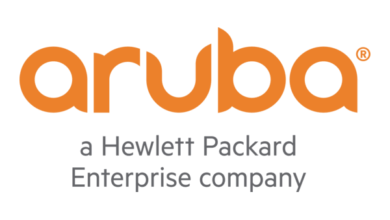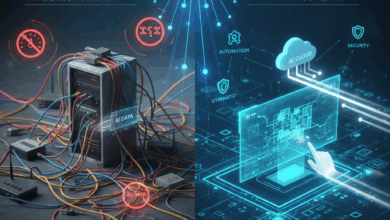Cisco AI Canvas reshaping enterprise NetOps is what we’ll look at today.
The world of enterprise networking is experiencing a seismic shift.
Modern networks are complex. And you can couple this with a relentless demand for uptime and a constant cyber threat. All factors that are pushing traditional operational models to their breaking point.
Network operations (NetOps) teams are often drowning in alerts. And consequenly, struggling to connect disparate pieces of information. Which often leads to spending precious hours on manual troubleshooting.
Enter Cisco AI Canvas. A revolutionary platform poised to fundamentally transform how enterprises manage their networks. A new level of intelligence, automation, and collaboration.
Cisco AI Canvas is far more than just another dashboard. This is Cisco’s first Generative UI. It’s designed as a shared, intelligent workspace for cross-domain IT.
This means it brings together real-time telemetry, AI-driven insights, and collaborative tools. And into one cohesive view. This supports breaking down the silos that have long plagued enterprise IT departments.
It’s built with a vision for what Cisco calls “AgenticOps.”. A future where AI agents intelligently assist and even autonomously manage IT tasks, always with human oversight and control.
The Genesis of AI Canvas: Addressing Modern Challenges
To truly understand the significance of AI Canvas, we must first acknowledge the challenges facing enterprise network operations today. Imagine a large organization with hundreds or even thousands of network devices, a myriad of applications, and countless users.
In this environment, an issue might manifest as a slow application, but the root cause could be anywhere – a misconfigured switch, a congested WAN link, a security policy conflict, or even a problem outside the enterprise’s control.
Pinpointing the exact issue often involves sifting through mountains of logs, bouncing between different management tools, and engaging multiple specialised teams (NetOps, SecOps, AppOps).
This fragmented approach leads to slow problem resolution, increased downtime, and significant operational overhead.
Sheer volume of alerts is a major pain point
IT teams are often barraged with tens of thousands of network alerts per hour, a number expected to triple with the proliferation of AI workloads. Distinguishing critical issues from benign noise becomes a monumental task.
Furthermore, the increasing reliance on AI agents and applications means that response times must be exceptionally fast, often in the sub-50 millisecond range, something traditional human-driven processes simply cannot achieve consistently.
Cisco AI Canvas directly addresses these critical challenges by orchestrating data, insights, and actions at machine speed.
A Unified, Intelligent Workspace for AgenticOps
At the heart of Cisco AI Canvas lies its ability to unify disparate data sources.
It pulls in real-time telemetry from across the Cisco portfolio, including Cisco Meraki, Cisco Catalyst, ThousandEyes, and even third-party solutions like Splunk.
This comprehensive data ingestion allows AI Canvas to build a holistic picture of the IT environment, from network infrastructure to application performance and user experience. It’s not just about collecting data; it’s about making that data actionable through intelligent correlation and analysis.
This intelligent analysis is powered by the Cisco AI Assistant and Cisco’s proprietary Deep Network Model.
The Deep Network Model is a specialized Large Language Model (LLM) trained on decades of Cisco’s vast networking expertise, including highly detailed CCIE-level content and Cisco U. courseware.
This purpose-built intelligence allows the AI Assistant to understand network intricacies with a depth that general-purpose LLMs simply cannot match. It can identify issues, diagnose root causes, and even suggest automated workflows in natural language, effectively becoming an invaluable virtual expert for IT teams.
The Generative UI of AI Canvas is a standout feature. Unlike static dashboards, AI Canvas can dynamically generate custom visualizations and dashboards tailored to specific incidents or user queries.
When a service issue arises, AI Canvas instantly pulls in the relevant data, connects the dots across different domains, and presents a live, contextualized picture of what matters most.
This intuitive, AI-driven interface significantly reduces the time spent sifting through menus and hopping between different tools, allowing engineers to drill down into issues within seconds.
Transforming Workflows for NetOps, SecOps, and App Teams
The impact of Cisco AI Canvas on enterprise network operations spans across NetOps, SecOps, and application teams, fostering a level of cross-functional collaboration previously unattainable.
For NetOps teams, AI Canvas dramatically accelerates troubleshooting.
Instead of manually correlating logs and performance metrics, the AI Assistant embedded within Canvas provides guided diagnostics and recommended actions.
Tasks like verifying network configurations, checking compliance, or even executing switch migrations that used to take hours can now be triggered by a simple natural language prompt and completed in minutes, with full validation.
The system provides transparency at every step, showing where the data comes from, what it means, and which actions are recommended, ensuring human teams remain in control and can audit every decision.
SecOps benefit from enhanced threat detection and incident response.
Network telemetry is correlated with security events. This means AI Canvas can provide richer context for security incidents. This enables more precise threat hunting and rapid containment.
The platform can recommend and even execute policy changes. And with team agreement, this means security vulnerabilities can be addressed at speed. And this bolsters overall security posture.
AI agents themselves can be a threat. So, AI Canvas offers capabilities like comprehensive tracking of agent actions and automated agent discovery. Capabilities that are critical for maintaining a robust Zero Trust environment.
For application teams, AI Canvas provides unparalleled visibility into the network’s impact on application performance.
By integrating with observability tools like ThousandEyes, it offers end-to-end assurance, quickly identifying if application slowdowns are indeed network-related, and if so, precisely where the bottleneck lies.
This reduces the blame game between different IT silos and fosters a more collaborative approach to ensuring optimal application delivery.
Human-in-the-Loop Automation
Cisco’s vision for AgenticOps, with AI Canvas as its workspace, is not about replacing human IT professionals but empowering them.
The system is designed for a “human-in-the-loop” model. Onw where AI agents handle the heavy lifting of data correlation, initial diagnosis, and proposed solutions.
However, critical decisions and execution still require human review and approval.
This ensures that while the network operates at machine speed, human expertise and judgment remain central to its operation. Every proposed action is auditable, and teams have the flexibility to review, confirm, or revert changes as needed.
This shift towards a more agentic world promises a future where networks are more proactive, self-healing, and resilient. Imagine a network that monitors itself. One that detects anomalies before they escalate into outages. That intelligently acts to resolve issues, often without the need for frantic war-room calls.
Cisco AI Canvas is the vehicle driving this transformation. Making network operations simpler, faster, and more secure for enterprises navigating the complexities of the AI era.
Organisations will continue to adopt sophisticated AI workloads. Consequently, they will demand ever-greater agility from their infrastructure. AI Canvas stands ready to be an indispensable tool in their operational toolkit.



